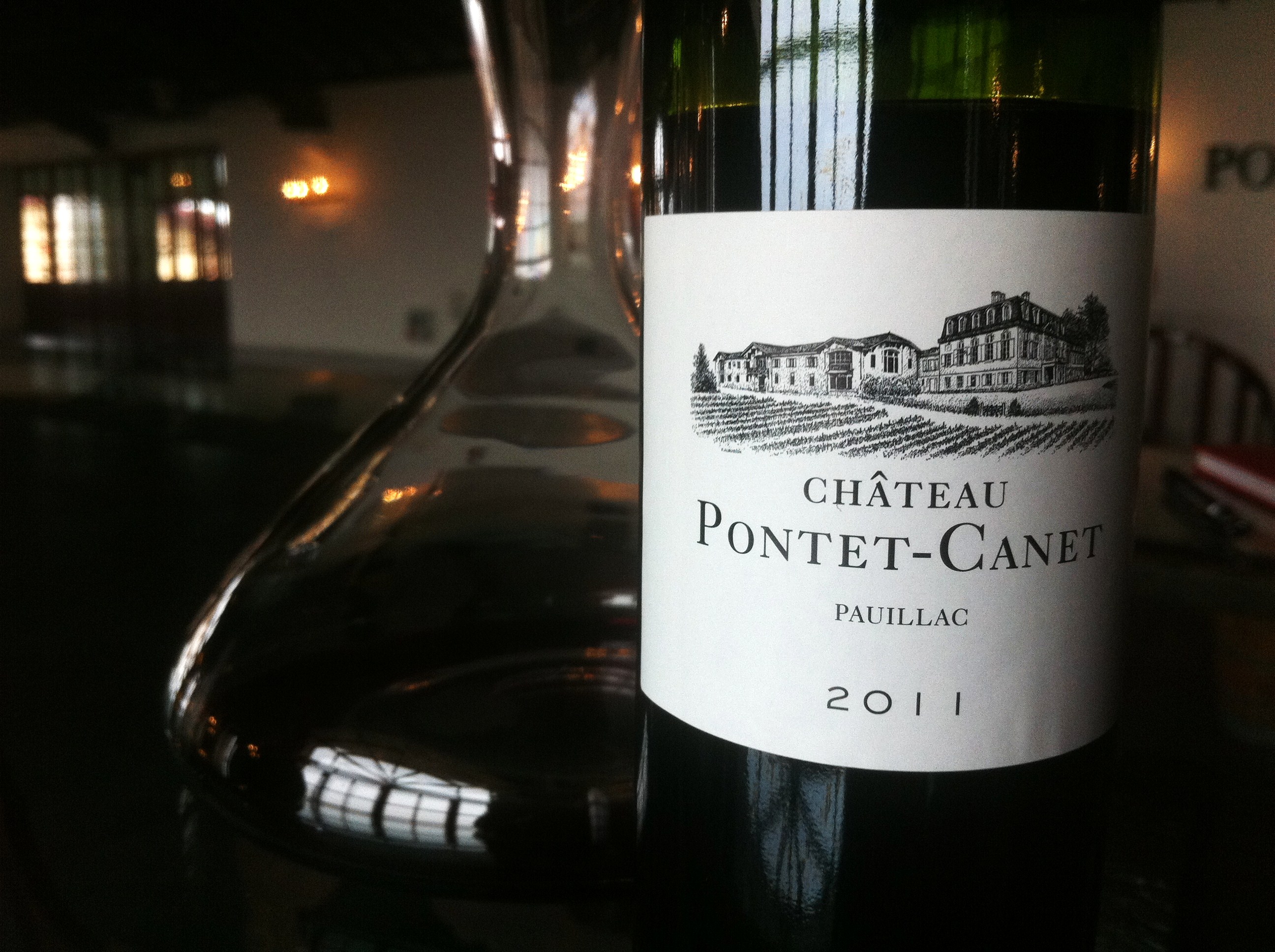Bordeaux 2008 at four years
 The much speculated upon Lafite ’08
The much speculated upon Lafite ’08
The MW Institute’s Annual Claret Tasting is almost too much of a good thing. Tasting all one hundred and twenty wines from Bordeaux’s finest districts requires steely determination, nifty footwork and a healthy dollop of over-ambition. You’ll also need to keep an eye on your watch as you’ve only a few hours. Then, just as you think you’ve licked it, tasting St Estèphe, Pauillac, St Julien, Margaux, Haut-Médoc and Pessac-Léognan back-to-back in the grand Vintners Hall, up come the wines of St Emilion and Pomerol, lying in wait in an adjoining room. Talk about kicking a man when he’s down. Fortunately, since last year, you can perk up with some fine Sauternes and Barsac at the very end before hailing a taxi cab and finding somewhere to lie down.
Clearly racing through all these wines in such a short space of time has its limitations. It takes a week to manage a Bordeaux vintage during the primeurs tastings period and even that feels pretty rammed, so horizontals like this are a race and provide a snapshot at best, time only for a quick interrogation of the suspect. Still it’s a really valuable event to attend and this year it was the turn of the 2008 vintage to stand up and be counted.
The 2008 growing season was tricky in Bordeaux. In many ways it bears comparison with 2007, but with conditions generally being a bit better. No-one really had high expectations, even when the wines were first shown during the primeurs week in Bordeaux, but then Robert Parker stuck his neck out and gave the vintage comparatively good reviews and sentiment changed. Still with the financial gloom and doom of the period, the hangover of which we are so clearly yet to escape, 2008 Bordeaux was offered at a reasonable enough price and was an attractive buy, especially when compared with the price hikes that followed with the releases of 2009 and 2010 – admittedly for two exceptional vintages.
 Chateau Calon-Ségur 2008 showed wonderfully
Chateau Calon-Ségur 2008 showed wonderfully
Overall my feeling having tasted the wines is that 2008 is creeping into its shell. Generally there is much more extract and depth on display than at last years 2007 MW horizontal and it is certainly a better vintage than that, but there’s also a lot of grip and acid too and the vintage felt less impressive than when tasted at the UGCB in October 2010, where the fruit was more evident and the wines had just been bottled. Now that first flush of youth has dipped to the background many wines felt a little more pinched and compact than I remembered, certainly on the Left Bank. Two years ago I thought 2008 had the edge on 2006, but I certainly came away with a more favourable impression of the latter wines at the same age, Left Bank at least. Certainly this vintage is not in the same league as 2009, 2010 or 2005. We knew that of course but I reckon it may even be triumphed by 2011. Time will tell.
The wines of Pessac-Léognan seemed the most harmonious, Pauillac and St Julien were pretty sinewy efforts overall, and St Estèphe was quite closed, Chateau Montrose especially so. The heterogeneous Margaux appellation was the usual mixed bag. On the Right bank St Emilion, despite the bevy of rather thick extracted numbers seemed to fair pretty well in many cases and Pomerol was a real bright spot. On the basis of the wines tasted it’s an agreeable, elegant year for Sauternes and Barsac but there is not the race, depth and botrytis on show as in 2009, 2010 and 2011.
Amongst the first growths, it’s difficult to believe that Chateau Lafite-Rothschild 2008 once used to command £16,000 [$25,000] a case. Now it is less than half that. Such were the speculators inflated expectations of the Chinese appetite for Lafite in the ‘lucky year’ with its Nike style ‘swoosh’ Chinese number 8 embossed bottle. In the glass it’s a classic effort, very Pauillac, with elegance and depth but also some pretty chewy tannin. For me it was eclipsed by a very showy Mouton. Chateau Haut-Brion looks very good and Chateau Margaux much better than in 2007. Amongst the leading super seconds Chateau Palmer was good, Chateau Cos d’Estournel very exciting and Chateau Calon-Ségur showed wonderfully. In Pauillac clearly Chateau Duhart-Milon is a success, along with Chateau Lynch-Bages and there is a terrific Chateau Pichon-Longueville. Chateau Pontet-Canet looked good but was subdued. In Pessac-Léognan no-one really put a foot wrong and Domaine de Chevalier, Chateau Malartic-Lagravière, Chateau Pape-Clément and Chateau Smith Haut Lafitte look to be great efforts. The surprises? Well Chateau La Tour Carnet, not really a surprise, but I thought this looked very good, with the Magrez ‘make-up’ kept in check. There is lots of bang for your buck here. Likewise Chateau Bouscaut looks good too in Pessac. Detailed tasting notes by appellation will follow shortly.
Tags: 2008, Barsac, Bordeaux, Chateau, Chateau Bouscaut, Chateau Calon-Ségur, Chateau Cos d’Estournel, Chateau Duhart Milon, Chateau Haut-Brion, Chateau La Tour Carnet, Chateau Lafite-Rothschild, Chateau Lynch Bages, Chateau Malartic-Lagravière, Chateau Margaux, Chateau Montrose, Chateau Mouton-Rothschild, Chateau Palmer, Chateau Pape Clément, Chateau Pichon-Longueville, Chateau Pontet Canet, Chateau Smith Haut Lafitte, Domaine de Chevalier, Haut Médoc, Margaux, MW Institute, Pauillac, Pessac-Léognan, Pomerol, Sauternes, St Emilion, St Estèphe, St Julien


